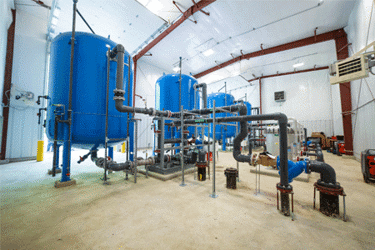Ion Exchange Resin Versus Granular Activated Carbon For Drinking Water Treatment

In April 2024, the EPA finalized a National Primary Drinking Water Regulation (NPDWR) establishing legally enforceable levels, called Maximum Contaminant Levels (MCLs), for six PFAS in drinking water. The MCLs range from 4 nanograms per liter (ng/L or parts per trillion) to 10 ng/L. Many existing drinking water treatment plants (DWTPs) use a combination of coagulation, flocculation and filtration technologies that, alone, are not capable of achieving these strict levels.
A cost-effective option for PFAS removal and MCL compliance is the addition of an ion exchange resin (IEX) treatment as a “bolt-on” to an existing DWTP. IEX treatment typically includes a pretreatment stage to remove co-contaminants that could impact the performance of the IEX to remove PFAS; an existing DWTP essentially provides this pretreatment. The dual mechanism of sorption and ion exchange for PFAS removal using IEX can achieve non-detect levels (i.e., MCLs or lower). Whereas Granular Activated Carbon (GAC) has also been historically used to treat PFAS, GAC is limited in its ability to treat short-chain PFAS, and requires longer Empty Bed Contact Times (EBCTs) to meet MCLs.
This translates in GAC requiring larger and more costly media vessels, more frequent media changeouts, increased operation and maintenance costs, and more PFAS waste – an important consideration with possible future designation of PFAS as a hazardous waste. In many cases, retrofit of an existing DWTP involves only the addition of the IEX vessels at the end of the current treatment process, and relocation of the disinfection stage,
Get unlimited access to:
Enter your credentials below to log in. Not yet a member of Water Online? Subscribe today.
